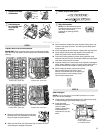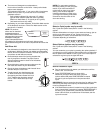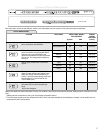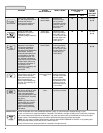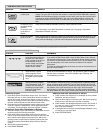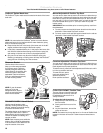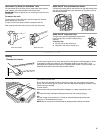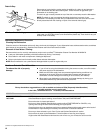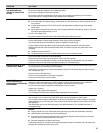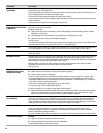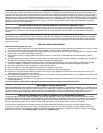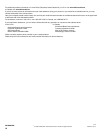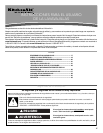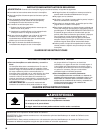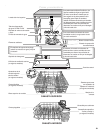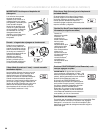
13
DETERGENT REMAINS IN
THE DISPENSER OR
TABLET IS ON BOTTOM
OF TUB
Check for dishware such as cookie sheets, cutting boards, or large containers, etc., that may be
blocking the detergent dispenser from opening properly.
Be sure your detergent is fresh and lump free.
Be sure the cycle has completed (the Clean light is on). If it has not completed, you will need to
resume the cycle by closing the door and pressing START/RESUME.
CYCLE RUNS TOO LONG NOTES:
■ To use less water and reduce energy consumption you will encounter cycles that typically run for
up to 3 hours.
■ A water heater setting of 120°F (49°C) is best, the dishwasher will delay longer while heating
cooler water.
■ Some options will add time to the cycle. See “Cycles and Options Descriptions” section. The Heat
Dry option adds approximately ¹⁄₂ hour.
Try the 1 Hour Wash cycle.
Run the hot water at a faucet close to the dishwasher before starting the cycle.
DISHWASHER NOT DRYING NOTE: Plastic and items with nonstick surfaces are difficult to dry because they have a porous
surface which tends to collect water droplets. Towel drying may be necessary.
Use of rinse aid along with the Heat Dry option is needed for proper drying.
Proper loading of items can affect drying. See specific loading instructions within this guide.
Glasses and cups with concave bottoms hold water. This water may spill onto other items when
unloading.
■ Unload the bottom rack first.
■ Locate these items on the more slanted side of the rack for improved results.
WILL NOT FILL Be sure the water is turned on to the dishwasher.
Check that the float is free from obstructions. See “Parts and Features.”
Check for suds in the dishwasher. If foam or suds are detected, the dishwasher may not operate
properly or may not fill with water. See “Blinking Lights” in “Troubleshooting.”
WATER REMAINS IN THE
TUB/WILL NOT DRAIN
Be sure the cycle has completed (the Clean light is on). If it has not, you will need to resume the cycle
by closing the door and pressing START/RESUME.
If dishwasher is connected to a food waste disposer, be sure the knockout plug has been removed
from the disposer inlet.
Check for kinks in the drain hose.
Check for food obstructions in the drain or disposer.
Check your house fuse or circuit breaker.
HARD WATER
(WHITE RESIDUE ON
DISHWASHER INTERIOR OR
GLASSWARE)
NOTE: Extremely hard water mineral deposits can cause damage to your dishwasher and make it
difficult to achieve good cleaning. A water softener is strongly recommended if your hardness is
15 grains or more. If a water softener is not installed, the following steps may help:
Use a commercial cleaner designed for dishwashers once per month.
Always use a rinse aid.
Always use a high-quality, fresh detergent.
Use a detergent booster/water softener additive designed for dishwashers.
ODORS NOTE: If the dishwasher is not used daily, you can run a rinse cycle with the partial load until a full
load is ready to run, or use the Top Rack Only option (on some models) for partial loads.
Run a vinegar rinse through the dishwasher by putting 2 cups (500 mL) of white vinegar in an upright
glass measuring cup in the lower rack. Run a normal cycle with the Heat Dry option turned off. Do not
use detergent.
The dishwasher may not be draining properly, see “Water Remains In The Tub/Will Not Drain” in
“Troubleshooting.”
NOISY NOTES:
■ Surging sounds can occur periodically throughout the cycle while the dishwasher is draining.
■ Normal water valve hissing may be heard periodically.
■ A normal snap sound may be heard when the detergent dispenser opens during the cycle and
when the door is opened at the end of the cycle.
■ Improper installation will affect noise levels.
A thumping sound may be heard if items extend beyond the racks and interfere with the wash arms.
Readjust the dishware and resume the cycle.
PROBLEM SOLUTION



